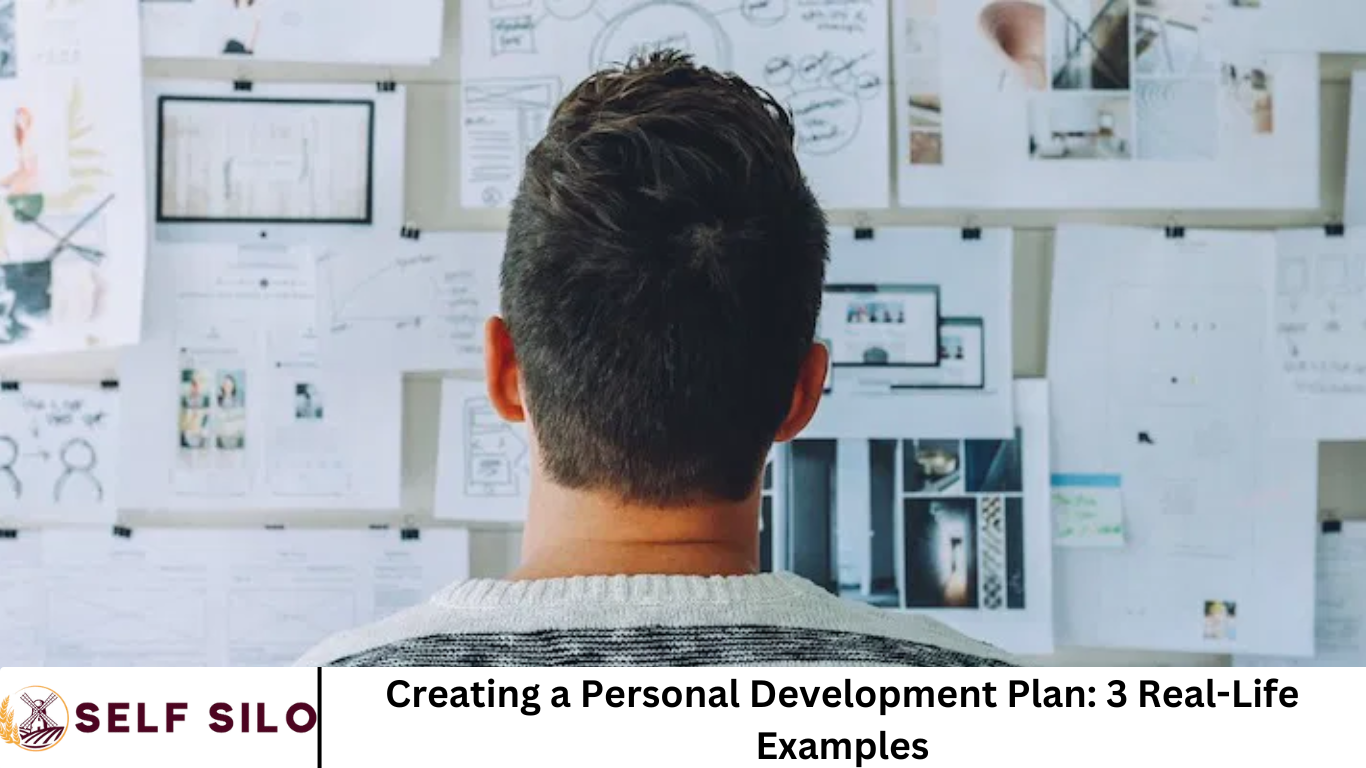Personal development is more than just a buzzword. It’s a lifelong journey of growth, self-awareness, and intentional improvement that can transform how we live, work, and relate to others. One of the most effective ways to pursue personal development is by creating a Personal Development Plan (PDP).
In this comprehensive guide, we’ll walk you through the process of building your own PDP and illustrate the concept with three real-life examples. Whether you’re focusing on career goals, emotional intelligence, or personal productivity, a well-crafted PDP can help you achieve meaningful progress.
More Read: 8 Mindfulness Techniques to Help You Relieve Stress
What Is a Personal Development Plan?
A Personal Development Plan (PDP) is a structured framework that helps individuals identify their goals, assess their current strengths and weaknesses, and outline the steps needed to grow personally and professionally. It acts as a personalized roadmap, aligning your daily actions with long-term aspirations.
Why You Need a Personal Development Plan
Without direction, personal growth can feel overwhelming. A PDP:
- Clarifies your goals
- Tracks your progress
- Increases motivation and accountability
- Helps identify skill gaps
- Aligns personal growth with career development
By providing structure and focus, a PDP ensures you’re not just busy, but productive.
Key Components of a Personal Development Plan
- Self-Assessment: Understanding your current skills, values, and areas for improvement
- Goal Setting: Defining SMART goals (Specific, Measurable, Achievable, Relevant, Time-bound)
- Action Steps: Outlining specific tasks or habits to help reach your goals
- Resources and Support: Identifying mentors, books, courses, or tools
- Timeline: Setting deadlines and milestones
- Review and Reflect: Regularly evaluating progress and adjusting the plan as needed
How to Create Your Personal Development Plan
Follow these six steps to build a PDP that works:
Step 1: Reflect on Where You Are Now
Start with a self-assessment. Consider your strengths, weaknesses, values, and interests. What are you good at? What skills or habits need improvement?
Step 2: Define Your Vision and Long-Term Goals
Think about where you want to be in 1, 5, or 10 years. Do you want to lead a team? Learn a new language? Become more emotionally resilient?
Step 3: Break Goals Into Actionable Steps
Break down your long-term goals into smaller, achievable milestones. Make them specific and measurable.
Step 4: Identify Resources and Support
What do you need to reach your goals? Consider mentors, online courses, books, or accountability partners.
Step 5: Set a Timeline
Create a realistic schedule for completing each action step. Set both short-term and long-term deadlines.
Step 6: Review and Adjust Regularly
Growth isn’t linear. Review your progress weekly or monthly and adjust your plan as needed.
Real-Life Example 1: Career Advancement
Name: Sarah, Marketing Specialist
Goal: Get promoted to Marketing Manager within 12 months
Self-Assessment:
- Strengths: Creativity, content strategy, communication
- Weaknesses: Data analytics, leadership experience
Action Steps:
- Enroll in a data analytics course (3 months)
- Lead a small internal campaign team (6 months)
- Schedule monthly one-on-ones with her manager for feedback
- Read 3 books on leadership and management
- Request a mid-year performance review
Resources:
- Coursera data analytics course
- Leadership books like “Leaders Eat Last”
- Mentorship from senior team members
Timeline: 12-month goal, with quarterly reviews
Result: Sarah was promoted within 10 months due to proactive learning and leadership growth.
Real-Life Example 2: Emotional Intelligence
Name: Jason, Software Developer
Goal: Improve emotional intelligence (EQ) to build better workplace relationships
Self-Assessment:
- Strengths: Technical skills, problem-solving
- Weaknesses: Active listening, empathy, managing emotions
Action Steps:
- Attend a workshop on emotional intelligence (1 month)
- Practice active listening techniques daily
- Journal about emotional reactions at work
- Solicit feedback from peers every 2 weeks
- Meditate 10 minutes a day to build self-awareness
Resources:
- Local EQ seminar
- Books: “Emotional Intelligence 2.0”
- Mindfulness apps like Headspace
Timeline: 6-month focus with monthly progress check-ins
Result: Jason reported better teamwork, received positive peer feedback, and felt more connected to colleagues.
Real-Life Example 3: Personal Productivity
Name: Aisha, Entrepreneur
Goal: Improve time management and daily productivity
Self-Assessment:
- Strengths: Visionary thinking, creative problem-solving
- Weaknesses: Procrastination, poor planning
Action Steps:
- Implement time blocking in calendar
- Use the Pomodoro Technique to reduce distractions
- Set weekly goals every Sunday night
- Review task progress daily
- Limit social media use to 30 minutes/day
Resources:
- Productivity planner
- Apps like Todoist and Focus Booster
- Accountability partner from a business mastermind group
Timeline: Ongoing, with 30-day initial sprint and monthly reviews
Result: Aisha doubled her productivity, launched a new product, and created a more balanced workday.
Tools and Worksheets to Support Your PDP
- SWOT Analysis Worksheet: Identify strengths, weaknesses, opportunities, and threats
- SMART Goals Template: Clarify your objectives
- Weekly Planner: Organize your time and tasks
- Progress Tracker: Monitor milestones and reflect on growth
These tools provide structure and motivation throughout your personal development journey.
Frequently Asked Question
What is a Personal Development Plan (PDP)?
A Personal Development Plan is a structured outline that helps you identify your goals, evaluate your current skills, and create a roadmap for achieving personal and professional growth. It includes self-assessment, goal setting, action steps, and regular progress reviews.
Why is a Personal Development Plan important?
A PDP gives clarity, focus, and direction to your personal growth journey. It helps you stay motivated, track progress, and make intentional changes in areas such as career advancement, emotional intelligence, and productivity.
How do I start creating a Personal Development Plan?
Begin with self-reflection to assess your current strengths and weaknesses. Then define SMART goals, break them into actionable steps, identify the resources you need, set a timeline, and schedule regular reviews to track your progress.
What are SMART goals and why should I use them in my PDP?
SMART goals are Specific, Measurable, Achievable, Relevant, and Time-bound. Using this method ensures your goals are clear and reachable, making it easier to create an effective action plan and measure success.
Can you give examples of real-life personal development goals?
Yes. Examples include:\n- Getting promoted within a year (Career)\n- Improving emotional intelligence to enhance relationships (Emotional Growth)\n- Boosting time management to increase daily productivity (Personal Efficiency)
How often should I review and update my PDP?
You should review your PDP at least once a month. Regular reviews allow you to reflect on your progress, adjust your goals, and stay aligned with your long-term vision.
Are there any tools or templates to help with my Personal Development Plan?
Yes. Common tools include SWOT analysis templates, SMART goals worksheets, weekly planners, and progress trackers. Many are available online or through personal growth platforms.
Conclusion
Creating a personal development plan empowers you to take charge of your growth. With a clear vision, actionable steps, and regular review, a PDP turns aspirations into achievements. Whether your goals are professional, emotional, or personal, having a structured approach makes them more attainable. Start today by reflecting on your current state and defining one key goal. Use the examples above as inspiration, and begin crafting your own personalized roadmap to success.


